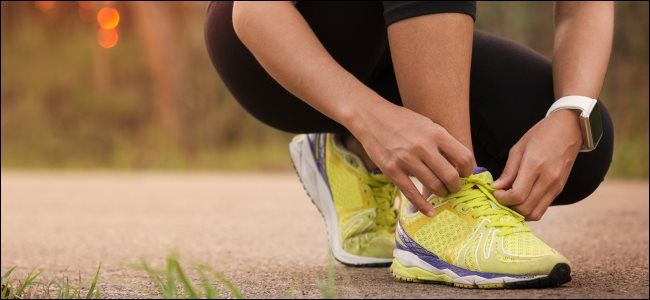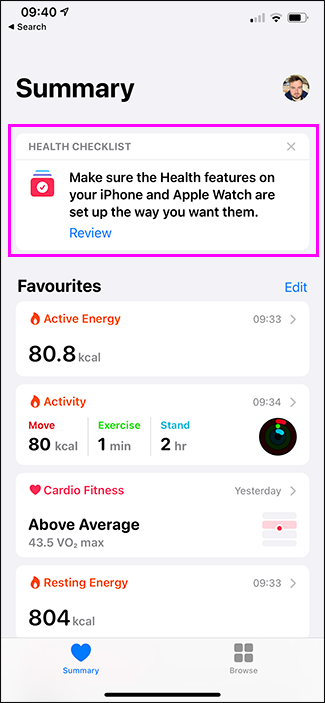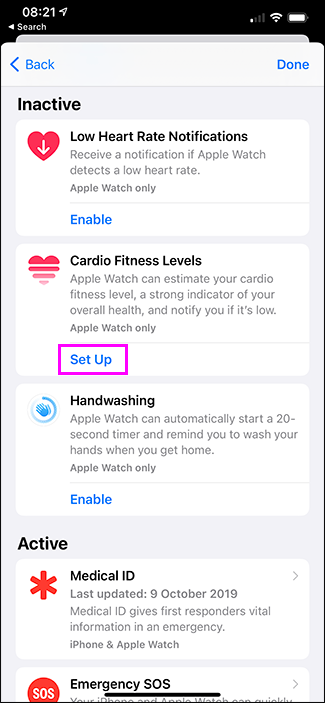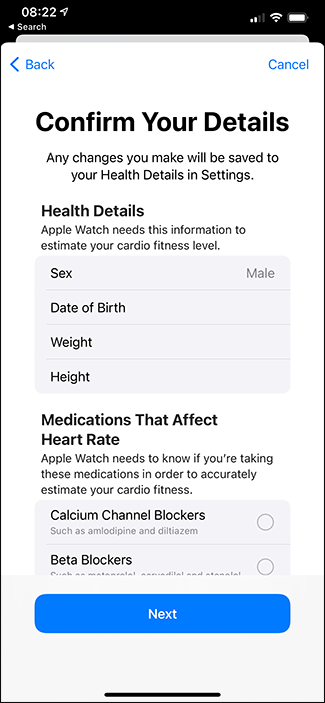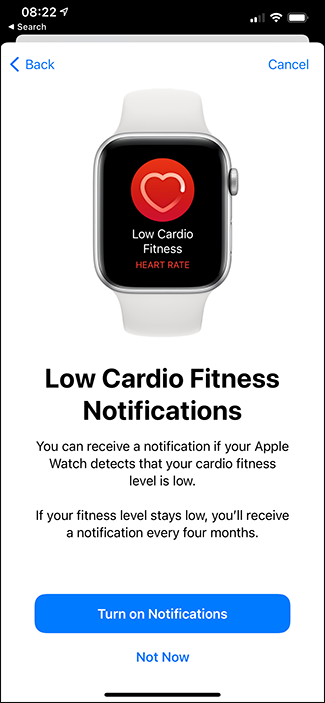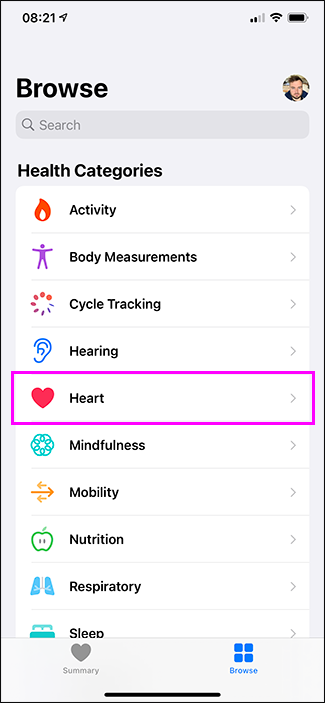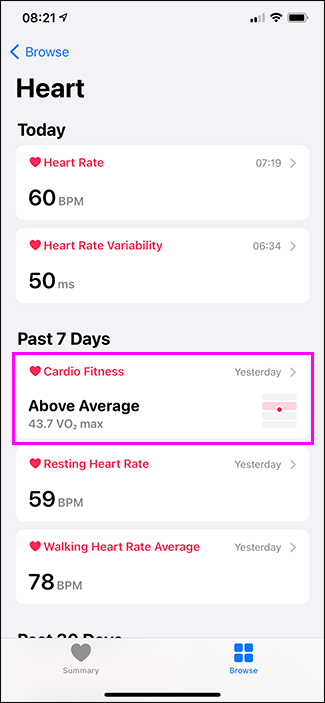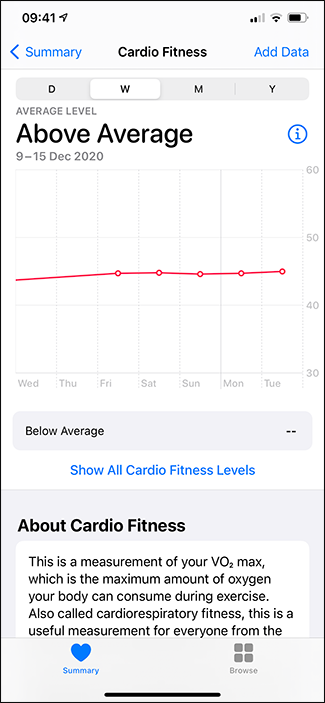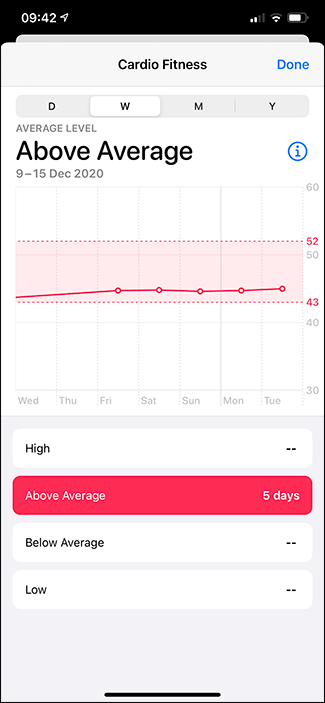Quick Links
Your Apple Watch can display and rank your cardiovascular fitness using something called "VO2 Max." Here's what it all means, how to check your VO2 max---and how to improve it.
Which Apple Watch Models Can Check VO2 Max?
The Apple Watch has lagged behind sports watches (like Garmins) in how it displayed your cardio fitness. With the watchOS 7.2 update, which was released on December 14, 2020, the Apple Watch can now track your VO2 max.
The Watch has actually been able to do this for a while, but it's been a hidden option tucked away in the Health and Fitness apps. However, with the update, it's now front and center. You can see how you stack up against other people your age, and you can get notifications if your cardiovascular fitness is low.
Like many of the latest Apple Watch features, this one requires an Apple Watch Series 3 or later. This means that the Apple Watch SE is good. However, the Apple Watch Series 1 and Series 2, and the original Apple Watch, won't offer this feature.
What is VO2 Max?
VO2 max is a measure of cardiovascular or aerobic fitness---that's the kind of fitness that you use when you go on a long run or bike ride rather than when you sprint or lift weights. It's widely considered to be a strong indicator of your overall physical health as well as a factor in your long-term health outcomes.
It's measured as the maximum amount (or volume) of oxygen your body can use per minute as you work out. The acronym VO2 max is pretty easy to break down: the "V" stands for volume, the "O2" is oxygen's chemical symbol, and the "max" is, well, maximum.
VO2 max matters because the more oxygen your body can use, the harder you can work your muscles and the faster you can run, cycle, or swim. (Or, the faster you can go without working so hard. Elite runners' hearts don't beat much faster than those of less capable athletes, they're just a lot better at using oxygen and more efficient at running.).
VO2 max is almost always given as a number between about 15 and 80, where higher is better. It's measured in milliliters of oxygen used per kilogram of body weight per minute of exercise (mL/kg/min). Since the measurement is controlled by body weight, it's comparable between different people.
Your VO2 max decreases over your lifetime. The younger and more active you are, the higher it will naturally be.
Also, you can get different VO2 max scores for different exercises. Someone can be a very efficient cyclist but a very inefficient runner. Don't take the score your watch gives you as the ultimate decider of your overall health. It's just a decent guideline.
How Your Apple Watch Calculates VO2 Max
The most accurate way to calculate VO2 max is in a lab, with the subject on a treadmill and hooked up to a load of monitors. Obviously, your Apple Watch can't do that for you.
However, your heart rate and the speed at which you walk or run correlate pretty well with your VO2 max. This is the basis of the Cooper Test, a 12-minute running test that you might have been put through in high school, and the Rockport walking test, a one-mile walk.
So, instead of administering a full-blown fitness test, your Apple Watch tracks your heart rate when you walk, run, or hike outdoors, and does a bit of math.
How to Set Up Cardio Fitness Levels on Your Apple Watch
Make sure that your iPhone is updated to at least iOS 14.3, and that your Apple Watch is updated to watchOS 7.2.
Open the "Health" app on your iPhone and tap "Review" under "Health Checklist." Next, under "Cardio Fitness Levels," tap "Set Up."
On the next few screens, you'll have to confirm your age, weight, height, and other details, such as medications you're taking that might affect your cardio fitness.
You'll also get a brief overview of the factors that can lower your fitness level and see your last recorded VO2 max---and how it stacks up against other people your age.
You can also enable "Low Cardio Fitness Notification." Just tap "Turn on Notifications," and every four months, if your cardio fitness stays below average, you'll receive a notification.
The Apple Watch's VO2 max calculation is only validated for people over 20 and for values between 14 and 60. So, if you're younger than 20 or extremely fit, the reading might not be accurate.
How to View Your VO2 Max
If you want to check your latest VO2 max measurements or see how it's changed over time, open the "Health" app, tap "Browse," then "Heart," and finally, "Cardio Fitness."
Tap the "D," "W," "M," or "Y" tabs to see your daily, weekly, monthly, or yearly averages. Tap "Show All Cardio Fitness Levels" to compare your VO2 max to the different ranges for your age and sex.
How to Test Your VO2 Max on Your Apple Watch
Your Apple Watch will passively track your VO2 max over time. However, it will also take a measurement every time you complete an outdoor walk, run, or hike that lasts longer than 20 minutes using the Workout app.
If you want to get a more accurate measurement of your VO2 max, perform a gentle warm-up, then open the "Workout" app on your watch and select the workout you want to do. Go for at least 20 minutes at a steady pace and, once you finish, there'll be a new VO2 max reading.
The Apple Watch uses sub-maximal testing so that you don't have to run as hard as you can for that 20 minutes.
How to Improve Your Cardio Fitness
Cardio fitness has been correlated with some pretty serious health benefits. Just check out the list in this article from the American Heart Association. Physical fitness is linked with a lower risk of heart disease, stroke, type 2 diabetes, high blood pressure, dementia, Alzheimer's, and some cancers.
However, improving your cardio fitness takes time and effort. The VO2 max in the Health app won't change quickly---but it will change. And the only way to do it is with exercise.
If you're just starting out, check out a couch to 5k program. The idea is that over six weeks, you'll go from sitting on your couch to being able to walk or run five kilometers (just over three miles). Though of course, you should check in with your doctor before engaging in any strenuous activities if you haven't done them before.
If you're already fit enough to run, things will be a bit harder. Talk to a personal trainer, find a more advanced running program, and otherwise commit to getting out and working up a sweat. Then watch that number climb.

